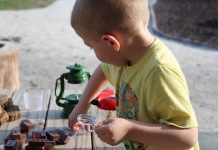Mental health is an extremely significant concern for human beings across the planet. However, there has been little discussion and deliberation on the mental health challenges and concerns of people such a astronauts who spend a significant portion of their time on isolated and physically taxing missions, How do they deal with such challenges. This article is all about this fascinating theme.
Six months is a typical mission duration on the International Space Station (ISS). So how do astronauts put up with each other? And how do they make that tin can in the sky a bit more like home?
Phyllis Johnson is a sociologist at the University of British Colombia who is hoping to answer some of those questions through her study ‘At Home In Space’.
“This is the first study to look at the extent to which a unique, shared space culture develops, whether crews develop customs and celebrations that are part of being on the station and different from what they would do on Earth,” explains Phyllis Johnson, principal investigator, Department of Sociology at the University of British Columbia in Vancouver, Canada.
At Home In Space
At Home in Space is Canada’s first psychosocial experiment on board the International Space Station (ISS). It examines how astronauts from all over the world make the Station feel like home, far from friends and family, in an often stressful space environment.
At Home in Space began in 2015 and is expected to be completed in 2019/2020.
The investigation also takes the first look at how crew members adapt their living quarters to make them feel like home. Historically, astronauts have taken into space personal items such as photographs, children’s drawings and hobby activities. But no one has asked crew members how important it is to have these things with them.
What does the Study Aim to do?
As Astronauts spend years training for their missions, yet what actually awaits them cannot be put in words. They are faced with not only isolation, loneliness, high stress levels, but have to live in cramped quarters with new room-mates. The amount of adjustments and unique, spontaneous adaptations they must make when living in space are bound to take a toll on their mental health.
In light of this, Sociologist Phyllis Johnson’s along with her her co-investigator Peter Suedfeld are trying to take a closer look at how crewmembers adapt to living with each other by creating a shared culture. Its findings are crucial to develop guidelines to enhance the well-being of space travellers during longer trips to faraway destinations like Mars.
“It is important to recognize and measure positive effects of being in a challenging environment such as space,” said co-investigator and psychologist Peter Suedfeld, also at the University of British Columbia. “We look at personal change in attitudes and perspectives once back on Earth to see the effects on an individual’s life after such a dramatic experience.”
At Home in Space aims to gain a better understanding of the mental, emotional, social, cultural, and environmental adjustments that astronauts make during their missions.
It also examine the creation of a “space culture” that transcends cultural differences and describe the strategies astronauts use to cope with a long absence from family and their life on Earth.
The study also identify aspects of the astronauts’ backgrounds that might have affected their ability to adapt to life in space.
How does the study work
Data is collected before, during, and after ISS missions. Self-report measures are computer administered.
Twelve astronauts have reportedly participated in this study. They were asked to fill out questionnaires at five points before, during and after their journeys:
1. Pre-flight questionnaire: four to five months before the space mission
2. First in-flight questionnaire: two to three weeks after arrival on the ISS
3. Second in-flight questionnaire: three to four weeks before return to Earth
4. First post-flight questionnaire: one month after return
5. Second post-flight questionnaire: six months after return
They are also encouraged to take pictures of celebrations or any other examples of a “space culture” being created and of their customized living quarters.
Why is the study crucial?
The researchers believe, potential benefits of this work include a better understanding of the inter- and intrapersonal factors that may affect long space missions, which may ultimately facilitate the development of more effective countermeasures and empowerment strategies for long-duration missions.
Other benefits would be the design of effective procedures: to enhance crew feeling at home in space, to promote a shared culture in space that transcends cultural differences and reduces cross-cultural misunderstanding, to identify and enhance the positive aspects and after effects of space travel and ameliorate negative ones, and to recognize and cope with changes and possible problems in work-family interactions and consequences.
How is the study also crucial for life on Earth?
According to the researchers, the findings of this study could be crucial for not only space life but
also be applied to people living in remote environments on earth like expeditions to polar regions, military deployments, voyages on cargo ships, and jobs on oil rigs are extreme experiences that feature small quarters and having little contact with family for long periods of time.
A greater understanding of cooperative living could also help nursing homes learn how to ease a new resident’s transition into a shared space and therefore enable the community to tackle challenges associated with mental health and wellbeing.
There are many communities on Earth that share some of the characteristics of a space capsule, and whose functioning could be improved by our findings. One of these is the situation of the aged, especially those in group housing: planned communities, assisted living centers, or nursing homes.
The residents are removed from their families and accustomed social circles, as well as from their former homes with their well-known layout, décor, and memorabilia of their life. Their living space is limited, and so is their privacy, autonomy, and control over their social and physical environment. To the extent that we learn how a confined group can develop a common culture that enhances their bonding and morale, and what the members can do to make their unique environment feel more like home, institutional residences for the elderly may be able to enhance the lives of their clients.
Therefore the findings will obviously have applications to people living in remote, confined, and isolated environments (e.g., resource extraction camps, oil rigs, long-voyage tankers, cargo ships, and the Arctic and Antarctic), and to those whose employment is dangerous and requires periodic absences from family (e.g., military deployments). Thus it is important for us to acknowledge and take cognisance of the fact that the mental health of astronauts working in isolated and challenging circumstances, ought to be researched more extensively.














